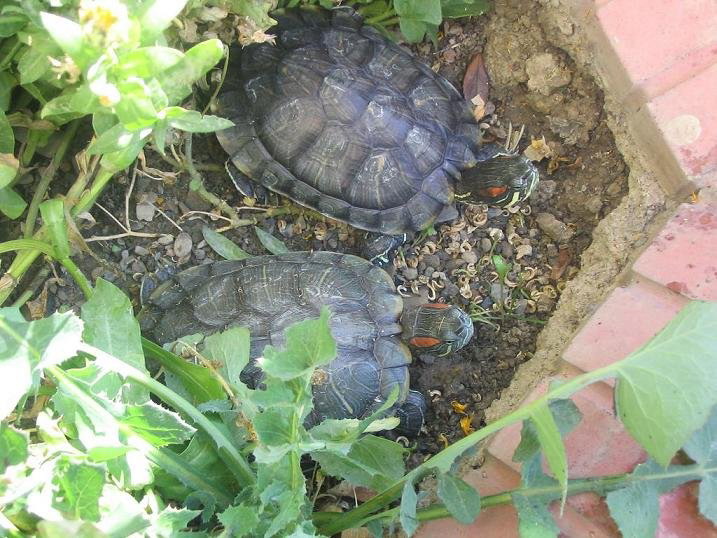|
Yilan River
The Yilan River () is a tributary of the Lanyang River in Yilan County, northeast Taiwan. It flows through Yilan for 25 kilometers. Fauna Three turtle species occur in the Yilan River: the native Chinese stripe-necked turtle and yellow pond turtle, and the introduced red-eared slider, which outnumbers the native species. Glass eels of two eel species, ''Anguilla japonica'' and ''Anguilla marmorata'', are found in the river. See also *List of rivers in Taiwan This is a list of rivers ( or ) on Taiwan Island in the Republic of China which are over : * Dongshan River - Yilan County - *Lanyang River - Yilan County - **Yilan River - Yilan County - ** Qingshui River - Yilan County - ** Luodong Ri ... References Rivers of Taiwan Landforms of Yilan County, Taiwan {{taiwan-river-stub ... [...More Info...] [...Related Items...] OR: [Wikipedia] [Google] [Baidu] |
Lanyang River
The Lanyang River () is a river in northeast Taiwan. Geology The river flows through Yilan County for 73 kilometers. It has a drainage basin area of 978 km2 with maximum peak flow of 5,420 m3/s. See also *List of rivers in Taiwan This is a list of rivers ( or ) on Taiwan Island in the Republic of China which are over : * Dongshan River - Yilan County - *Lanyang River - Yilan County - **Yilan River - Yilan County - ** Qingshui River - Yilan County - ** Luodong Ri ... References Rivers of Taiwan Landforms of Yilan County, Taiwan {{Taiwan-river-stub ... [...More Info...] [...Related Items...] OR: [Wikipedia] [Google] [Baidu] |
Zhuangwei
Zhuangwei Township or Jhuangwei Township () is a rural township in eastern Yilan County, Taiwan Province, Republic of China, the smallest in the county. Geography * Area: * Population: 24,492 (2014) Politics and government Administrative divisions The township comprises 14 villages: * Dafu (), Fuxing/Fusing (), Gonglao (), Gujie (), Guoling (), Guting (), Jixiang/Jisiang (), Meicheng (), Meifu (), Donggang (), Xinnan/Sinnan (), Xinshe/Sinshe (), Yongzhen/Yongjhen () and Zhongxiao/Jhongsiao (). Elections The township participated in the 2018 Taiwanese municipal elections supporting the candidacy of Lin Zi-miao (KMT). Energy The township government is currently constructing an organic refuse resource center to process 200 tons of refuse daily with a planned capacity of 400 kW. Tourist attractions * Wujian Ziyun Temple * Yongzhen Coast Park Transportation The nearest train station to the township is Yilan Station of Taiwan Railways, located in Yilan City. Notable nativ ... [...More Info...] [...Related Items...] OR: [Wikipedia] [Google] [Baidu] |
Yilan County, Taiwan
Yilan County, alternately spelled I-lan, is a County (Taiwan), county in northeastern Taiwan, Republic of China. Name The name ''Yilan'' derives from the Taiwanese indigenous peoples, indigenous Kavalan people. Other former names in reference to this area in the Yilan Plain include ''Kabalan'', ''Kavalan'', ''Kavaland'', ''kap-a-lan'', ''Yiland'' and ''Gilan''. Before 2009, the county's official name was transliterated as Ilan. History Early history Since early ages, many people have traveled from far places to Yilan. Taiwanese aborigines, Indigenous tribes that have settled in Yilan are Kavalan people and Atayal people. The Kavalan people came by the sea and lived by the river at Yilan Plain since around 1,000 years ago. They mostly speak the Austronesian languages. Their settlements consisted of small villages along rivers with around 40-50 communities scattered around the area with a total population of approximately 10,000 people. The Atayal people came by crossing ... [...More Info...] [...Related Items...] OR: [Wikipedia] [Google] [Baidu] |
Tributary
A tributary, or affluent, is a stream or river that flows into a larger stream or main stem (or parent) river or a lake. A tributary does not flow directly into a sea or ocean. Tributaries and the main stem river drain the surrounding drainage basin of its surface water and groundwater, leading the water out into an ocean. The Irtysh is a chief tributary of the Ob river and is also the longest tributary river in the world with a length of . The Madeira River is the largest tributary river by volume in the world with an average discharge of . A confluence, where two or more bodies of water meet, usually refers to the joining of tributaries. The opposite to a tributary is a distributary, a river or stream that branches off from and flows away from the main stream. PhysicalGeography.net, Michael Pidwirny & S ... [...More Info...] [...Related Items...] OR: [Wikipedia] [Google] [Baidu] |
Taiwan
Taiwan, officially the Republic of China (ROC), is a country in East Asia, at the junction of the East and South China Seas in the northwestern Pacific Ocean, with the People's Republic of China (PRC) to the northwest, Japan to the northeast, and the Philippines to the south. The territories controlled by the ROC consist of 168 islands, with a combined area of . The main island of Taiwan, also known as ''Formosa'', has an area of , with mountain ranges dominating the eastern two-thirds and plains in the western third, where its highly urbanised population is concentrated. The capital, Taipei, forms along with New Taipei City and Keelung the largest metropolitan area of Taiwan. Other major cities include Taoyuan, Taichung, Tainan, and Kaohsiung. With around 23.9 million inhabitants, Taiwan is among the most densely populated countries in the world. Taiwan has been settled for at least 25,000 years. Ancestors of Taiwanese indigenous peoples settled the isla ... [...More Info...] [...Related Items...] OR: [Wikipedia] [Google] [Baidu] |
Chinese Stripe-necked Turtle
The Chinese stripe-necked turtle (''Mauremys sinensis'') or golden thread turtle, is a species of turtle in the family Geoemydidae. Like many other Geoemydidae, this species hybridizes vigorously with related and not-so-closely related members of its family. It is one of the two most commonly found species used for divination that have been recovered from Shang dynasty sites, despite the Shang capital being over 1000 km north of its modern-day distribution range.Keightley (1979), see especially pp. 160, 189-194. Description Chinese-stripe-necked turtles have a green body. As a juvenile, its carapace is grayish green and there are three distinctive ridges. As an adult, the color fades to a brown color and the two ridges gradually disappear. The plastron is ivory in color with small black spots. The male's tail is more coarse and long, while adult females will be larger than the males. Habitat Chinese stripe-necked turtles prefer lowland waters such as ponds, canals, and sl ... [...More Info...] [...Related Items...] OR: [Wikipedia] [Google] [Baidu] |
Yellow Pond Turtle
The yellow pond turtle (''Mauremys mutica''), is a medium-sized (to 19.5 cm), semiaquatic turtle in the family Geoemydidae. This species has a characteristic broad yellow stripe extending behind the eye and down the neck; the carapace ranges in color from grayish brown to brown, and the plastron is yellow or orange with black blotches along the outer edges. It is native to East Asia, ranging from central Vietnam and Laos, north through the coastal provinces of south and central China, with insular populations known from Taiwan, Hainan and the Ryukyu Islands. Although populations in the southern Ryukyus are thought to be native, populations in the northern and central Ryukyus, as well as central Japan, are believed to have been introduced as a result of imports from Taiwan. This species inhabits ponds, creeks, swamps, marshes, and other bodies of shallow, slow-moving water. It is omnivorous, feeding on insects, fish, tadpoles, and vegetable matter such as leaves and seeds. The ... [...More Info...] [...Related Items...] OR: [Wikipedia] [Google] [Baidu] |
Red-eared Slider
The red-eared slider or red-eared terrapin (''Trachemys scripta elegans'') is a subspecies of the pond slider (''Trachemys scripta''), a semiaquatic turtle belonging to the family Emydidae. It is the most popular pet turtle in the United States, is also popular as a pet across the rest of the world, and is the most invasive turtle. It is the most commonly traded turtle in the world. The red-eared slider is native from the Midwestern United States to northern Mexico, but has become established in other places because of pet releases, and has become invasive in many areas where it outcompetes native species. The red-eared slider is included in the list of the world's 100 most invasive species. Etymology The red-eared slider gets its name from the small, red stripe around its ears, or where its ears would be, and from its ability to slide quickly off rocks and logs into the water. This species was previously known as Troost's turtle in honor of an American herpetologist ... [...More Info...] [...Related Items...] OR: [Wikipedia] [Google] [Baidu] |
Glass Eel
The eel is a long, thin bony fish of the order Anguilliformes. The species has a catadromous life cycle, that is: at different stages of development migrating between inland waterways and the deep ocean. Because fishermen never caught anything they recognized as young eels, the life cycle of the eel was a mystery for a very long period of scientific history. Past studies of eels The European eel (''Anguilla anguilla'') was historically the one most familiar to Western scientists, beginning with Aristotle, who wrote the earliest known inquiry into the natural history of eels. He speculated that they were born of "earth worms", which he believed were formed of mud, growing from the "guts of wet soil" rather than through sexual reproduction. Many centuries passed before scientists were able to demonstrate that such spontaneous generation does not occur in nature. In 1777, the Italian Carlo Mondini located an eel's ovaries and demonstrated that eels are a kind of fish. In 1876, as a ... [...More Info...] [...Related Items...] OR: [Wikipedia] [Google] [Baidu] |
Anguilla Japonica
The Japanese eel (''Anguilla japonica''; Japanese: 日本鰻 ''nihon'unagi'') is a species of anguillid eel found in Japan, Korea, China, and Vietnam, as well as the northern Philippines. There are three main species under the Anguilla genus, and all three share very similar characteristics. These species are so similar that it is believed that they spawned from the same species and then experienced a separation due to different environments in the ocean. Like all the eels of the genus ''Anguilla'' and the family Anguillidae, it is catadromous, meaning it spawns in the sea but lives parts of its life in freshwater. Raised in aquaculture ponds in most countries, the Japanese eel makes up 95% of the commercially sold eel in Japan, the other 5% is shipped over by air to the country from Europe. This food in Japan is called ''unagi''; they are an essential part of the food culture, with many restaurants serving grilled eel called ''kabayaki''. However, presumably due to a combination ... [...More Info...] [...Related Items...] OR: [Wikipedia] [Google] [Baidu] |
Anguilla Marmorata
The giant mottled eel (''Anguilla marmorata''), also known as the marbled eel, is a species of tropical anguillid eel that is found in the Indo-Pacific and adjacent freshwater habitats. Description Similar to other anguillids, the giant mottled eel is cylindrical with small, well-developed pectoral fins and a protruding lower jaw. The eel has thick, fleshy lips. The eel has dorsal and anal fins that are continuous around the tail, with the origin of the dorsal-fin between the pectoral fins and anus. It has small, oval-shaped scales that are embedded in the skin. Unlike some other anguillid species, this species has a mottled color. The adult eels are yellow with a greenish-brown to black marbling on their back and a white belly. The young elvers have less visible marbling and are grayish to yellow. The dorsal fin of the marbled eel is closer to the gill opening than to the anus, more anterior than other species of ''Anguilla''. Like all anguillid eels, it does not have pelvic fi ... [...More Info...] [...Related Items...] OR: [Wikipedia] [Google] [Baidu] |






